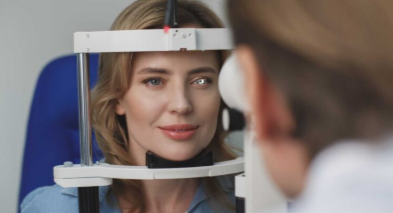
Cataracts, one of the leading causes of vision impairment globally, affect millions each year. The condition develops when the eye’s natural lens becomes clouded, leading to blurry vision, glare sensitivity, and, in severe cases, blindness. Fortunately, advances in medical technology have made Cataract surgery one of the safest and most precise vision-restoring procedures available today.
This article dives into the essentials of cataract surgery, from the advanced techniques surgeons use to its remarkable success rate. If you’re considering cataract surgery or just want to understand the procedure better, here’s what you need to know.
Why Cataract Surgery Is Necessary
Cataract surgery are a natural part of aging, with studies suggesting that over 50% of individuals aged 65 and older will develop the condition. Left untreated, cataracts can severely impair quality of life. Everyday tasks, like reading, driving, or recognizing faces, become challenging. Ultimately, surgery becomes the best solution for restoring clarity and independence.
Cataract surgery isn’t only about clearer vision; it also reduces the risk of falls and accidents among older adults. According to published statistics, patients who undergo cataract surgery experience a 40% lower risk of hip fractures compared to those who delay treatment. The benefits extend beyond vision, offering physical and emotional improvements to daily life.
The Procedure: Modern Precision at Work
Today’s cataract surgery is a marvel of modern medicine, boasting a success rate of over 98%. The procedure has evolved significantly over the past few decades, focusing on patient comfort and lasting results.
1. Using State-of-the-Art Technology
Cataract surgery typically involves replacing the cloudy natural lens with a clear artificial lens, also known as an intraocular lens (IOL). Advanced surgical techniques, such as phacoemulsification, use ultrasound technology to break down the cataract and safely remove it.
Laser-assisted cataract surgery is another innovative option that enhances precision by making microscopic incisions and accurately fragmenting the lens. This reduces the chances of surgical complications and speeds up recovery.
2. Types of Intraocular Lenses
Patients now have customized options when it comes to intraocular lenses. Standard monofocal lenses correct for either distance or near vision, while premium multifocal and toric lenses cater to those with astigmatism or the desire to eliminate glasses altogether. This personalized approach empowers patients to choose lenses that align with their lifestyle and vision needs.
3. Quick and Painless Experience
The procedure is performed under local anesthesia, ensuring minimal discomfort. Remarkably, the surgery itself usually takes 15-30 minutes, and most patients go home the same day. Recovery is also swift, with many individuals resuming daily activities within a few days.
How Effective Is Cataract Surgery?
Numerous clinical studies underscore the effectiveness of cataract surgery. Reports show that around 95% of patients experience significantly improved vision after the procedure. Many even report better eyesight than they had before developing cataracts, often regaining the ability to see fine details without glasses.
Postoperative care is vital to achieving long-term success. Proper eye drops, avoiding strenuous activity, and attending follow-up appointments ensure that recovery is smooth and the results are optimal.
A Life-Changing Decision
For many, cataract surgery is more than a medical procedure; it’s a chance to regain independence and improve overall quality of life. From better vision clarity to enhanced safety and confidence, the benefits are undeniable.
If you’re experiencing blurry vision, difficulty seeing at night, or other cataract symptoms, consulting an ophthalmologist is the first step to restoring your sight. Cataract surgery is a tried-and-tested way to reclaim not just your vision but also your freedom. Through modern precision and innovations in technology, it’s never been easier to look toward a brighter, clearer future.


